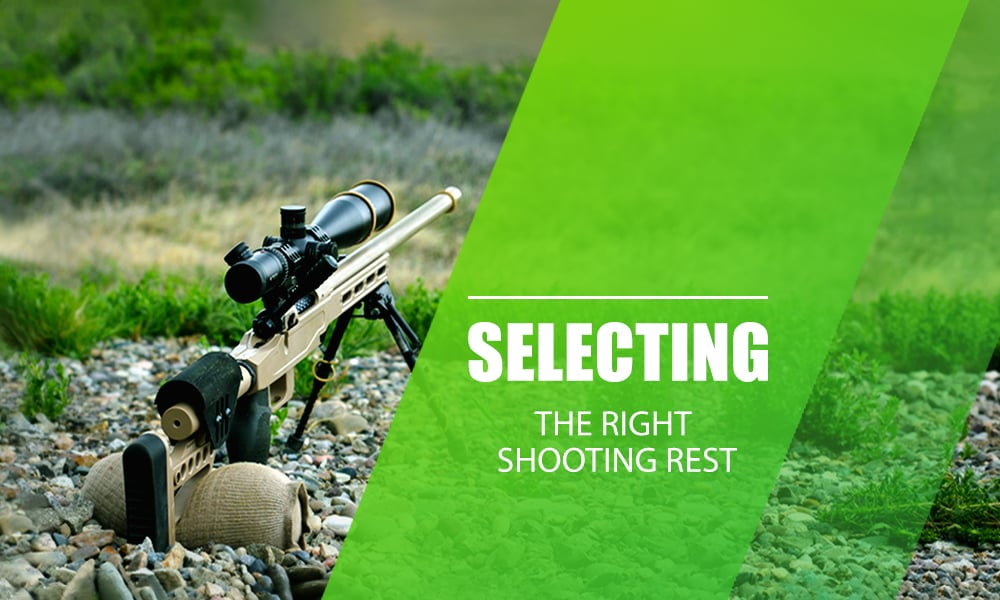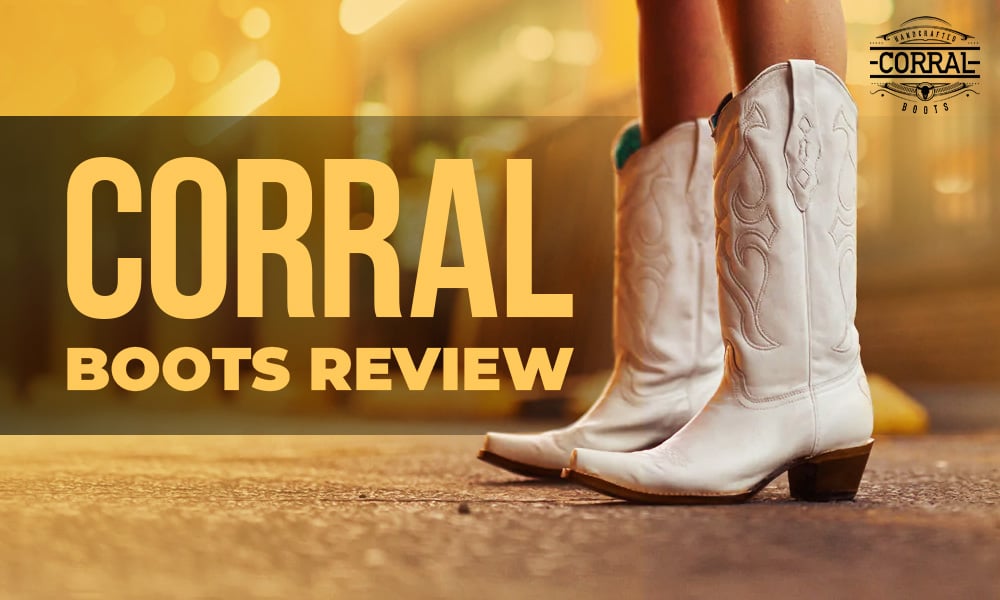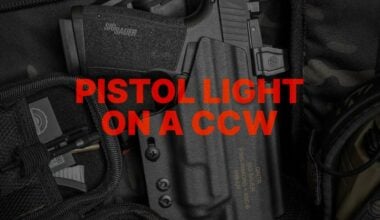Outline
 A gun shooting rest, also known as a gun rest, gun sighting stand, or precision shooting rest, is a fixture device consisting of one or two pieces. The main strengths of a gun rest are adjustability and stability. The rest gives fixed stable support in the forend and the action for zeroing and prevents the position change due to micro-movements. When operating the rifle, your handwork interferes the least with the rifle’s position. Even after the recoil force is applied, returning to the initial position for the follow-up shots won’t be too hard, thanks to the rest’s adjustments. Many gun rests also aid in reducing felt recoil, usually through weight bags.
Since gun rests provide the best repeatable point of impact, they are great for long-range and extreme long-range competitions.
A gun shooting rest, also known as a gun rest, gun sighting stand, or precision shooting rest, is a fixture device consisting of one or two pieces. The main strengths of a gun rest are adjustability and stability. The rest gives fixed stable support in the forend and the action for zeroing and prevents the position change due to micro-movements. When operating the rifle, your handwork interferes the least with the rifle’s position. Even after the recoil force is applied, returning to the initial position for the follow-up shots won’t be too hard, thanks to the rest’s adjustments. Many gun rests also aid in reducing felt recoil, usually through weight bags.
Since gun rests provide the best repeatable point of impact, they are great for long-range and extreme long-range competitions.
 A bag is the most versatile and easy-to-use support for your gun. Ranging from small handheld shooting squeeze bags to barricade bags to large pillow bags, they can be filled with various materials, depending on the purpose of a particular design. Heavier bags help you with recoil management, while lightweight bags are easier to carry around the range or your hunting area.
Nothing can beat bags when versatility is a top priority because they have the greatest potential for improvisation. You can pick a couple of designs and use them with an array of shooter/rifle positions if you know how to do it correctly. Another advantage is that shooting sandbags and beanbags work wonderfully on uneven surfaces and with unconventional barricades.
A bag is the most versatile and easy-to-use support for your gun. Ranging from small handheld shooting squeeze bags to barricade bags to large pillow bags, they can be filled with various materials, depending on the purpose of a particular design. Heavier bags help you with recoil management, while lightweight bags are easier to carry around the range or your hunting area.
Nothing can beat bags when versatility is a top priority because they have the greatest potential for improvisation. You can pick a couple of designs and use them with an array of shooter/rifle positions if you know how to do it correctly. Another advantage is that shooting sandbags and beanbags work wonderfully on uneven surfaces and with unconventional barricades.
 There’s a problem with rifle rest bags. If you take an AR-15 with a standard 30-round magazine and rest it against any shooting bag, you’ll notice that you can’t raise the muzzle high enough because the magazine bumps up against the table. You can fix this problem with a foam rest, which is basically a rectangle with cuts meant to accept the pistol’s barrel or rifle’s action and forend. Tall and solid, they provide the necessary clearance for semi-auto firearm magazines.
Foam rests are cheap and super-lightweight, and the foam itself is high-density and can take a good amount of abuse. Compared to beanbags that often feature straps for carrying around or attaching them to rifles, foam rests lack these, which makes them bulky. Besides, they don’t reduce recoil at all and are difficult to use on uneven surfaces. But, if you shoot from a table or bench, foam rests are very handy.
There’s a problem with rifle rest bags. If you take an AR-15 with a standard 30-round magazine and rest it against any shooting bag, you’ll notice that you can’t raise the muzzle high enough because the magazine bumps up against the table. You can fix this problem with a foam rest, which is basically a rectangle with cuts meant to accept the pistol’s barrel or rifle’s action and forend. Tall and solid, they provide the necessary clearance for semi-auto firearm magazines.
Foam rests are cheap and super-lightweight, and the foam itself is high-density and can take a good amount of abuse. Compared to beanbags that often feature straps for carrying around or attaching them to rifles, foam rests lack these, which makes them bulky. Besides, they don’t reduce recoil at all and are difficult to use on uneven surfaces. But, if you shoot from a table or bench, foam rests are very handy.
 Well, these pieces of gear need no introduction. All three have pros and cons, but, generally, the more axis you can stabilize, the better. It makes the tripod the best option for precision long-range matches, where you keep the rifle stable for a long time. However, monopods and bipods are faster and easier to deploy, which makes them preferable for stalk hunting, where a hasty setting for a shot is common.
Well, these pieces of gear need no introduction. All three have pros and cons, but, generally, the more axis you can stabilize, the better. It makes the tripod the best option for precision long-range matches, where you keep the rifle stable for a long time. However, monopods and bipods are faster and easier to deploy, which makes them preferable for stalk hunting, where a hasty setting for a shot is common.
 Shooting sticks are two sticks connected on one end to provide a rest for a rifle. While sticks look similar to a bipod, don’t let this mislead you. They are much more versatile because you can adjust them in seconds simply by spreading the legs to the necessary width. Bipods are more complex, and their adaptability is limited.
Shooting sticks are two sticks connected on one end to provide a rest for a rifle. While sticks look similar to a bipod, don’t let this mislead you. They are much more versatile because you can adjust them in seconds simply by spreading the legs to the necessary width. Bipods are more complex, and their adaptability is limited.
 A bench or table will suit a shooter who wants to base a range in their backyard or likes to explore different undeveloped locations for practicing and solitude. They are also great deer blind shooting rests. Generally, a bench or table will suit scenarios where prolonged sitting is involved.
A bench or table will suit a shooter who wants to base a range in their backyard or likes to explore different undeveloped locations for practicing and solitude. They are also great deer blind shooting rests. Generally, a bench or table will suit scenarios where prolonged sitting is involved.
 A gun rest will be the best competition shooting rest for long-range matches. Another option is a combo consisting of a bipod as a forward rest and a beanbag as a rear rest. It’s awesome for range and competition and, compared to a gun sighting stand, allows for more flexibility and less bulk.
Since operating a firearm or bow from a tree stand is a whole other story compared to shooting from the ground, tree stand shooting rests are specialized devices attachable to your tree stand station or directly to the tree. These include shooting rails and various rest systems (like one from Final Rest Shooting Systems).
A gun rest will be the best competition shooting rest for long-range matches. Another option is a combo consisting of a bipod as a forward rest and a beanbag as a rear rest. It’s awesome for range and competition and, compared to a gun sighting stand, allows for more flexibility and less bulk.
Since operating a firearm or bow from a tree stand is a whole other story compared to shooting from the ground, tree stand shooting rests are specialized devices attachable to your tree stand station or directly to the tree. These include shooting rails and various rest systems (like one from Final Rest Shooting Systems).
- What Is a Shooting Rest?
- Different Types of Shooting Rests
- Gun Rest
- Shooting Bag
- Foam Rest
- Monopod/Bipod/Tripod
- Shooting Sticks
- Shooting Table/Bench
- How to Use A Shooting Rest
- Pros and Cons of Gun Rests
What Is a Shooting Rest?
Basically, as the name suggests, it’s something on which you can rest your gun to increase its stability for more accurate and precise shots. Before the invention of rifling that considerably improved a gun’s accuracy, firing a flintlock musket offhand for the competition was uncommon. Instead, shooters put moss or other soft things that kept muskets steady. It compensated a little for the gun’s inherent inaccuracy. These can be considered early rests. Today, the term “shooting rest” refers to a group of devices and accessories intended to stabilize a gun and a particular piece of gear. Given this, let’s consider different types of gun rests for shooting.Different Types of Shooting Rests
Gun Rest
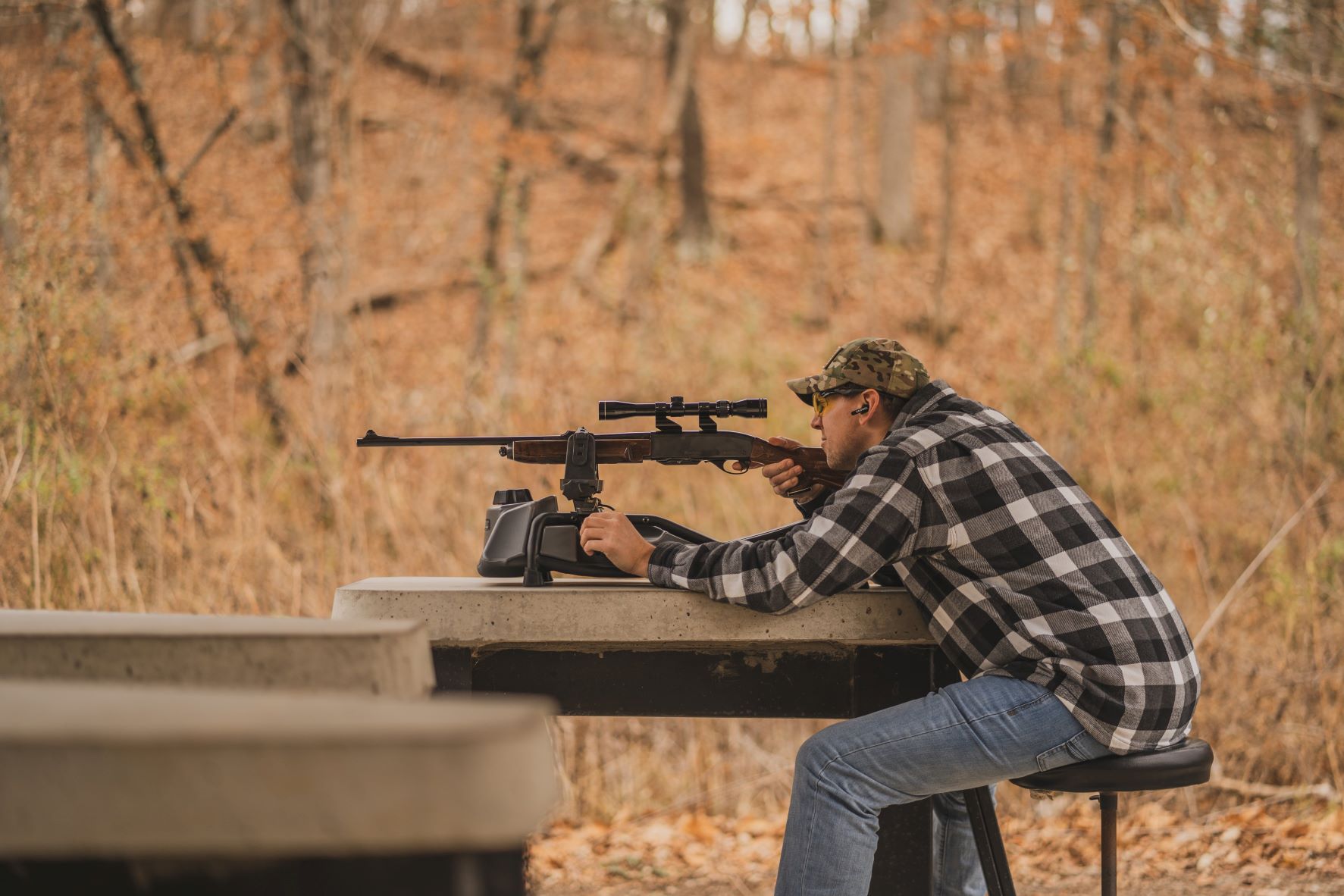 A gun shooting rest, also known as a gun rest, gun sighting stand, or precision shooting rest, is a fixture device consisting of one or two pieces. The main strengths of a gun rest are adjustability and stability. The rest gives fixed stable support in the forend and the action for zeroing and prevents the position change due to micro-movements. When operating the rifle, your handwork interferes the least with the rifle’s position. Even after the recoil force is applied, returning to the initial position for the follow-up shots won’t be too hard, thanks to the rest’s adjustments. Many gun rests also aid in reducing felt recoil, usually through weight bags.
Since gun rests provide the best repeatable point of impact, they are great for long-range and extreme long-range competitions.
A gun shooting rest, also known as a gun rest, gun sighting stand, or precision shooting rest, is a fixture device consisting of one or two pieces. The main strengths of a gun rest are adjustability and stability. The rest gives fixed stable support in the forend and the action for zeroing and prevents the position change due to micro-movements. When operating the rifle, your handwork interferes the least with the rifle’s position. Even after the recoil force is applied, returning to the initial position for the follow-up shots won’t be too hard, thanks to the rest’s adjustments. Many gun rests also aid in reducing felt recoil, usually through weight bags.
Since gun rests provide the best repeatable point of impact, they are great for long-range and extreme long-range competitions.
Shooting Bag
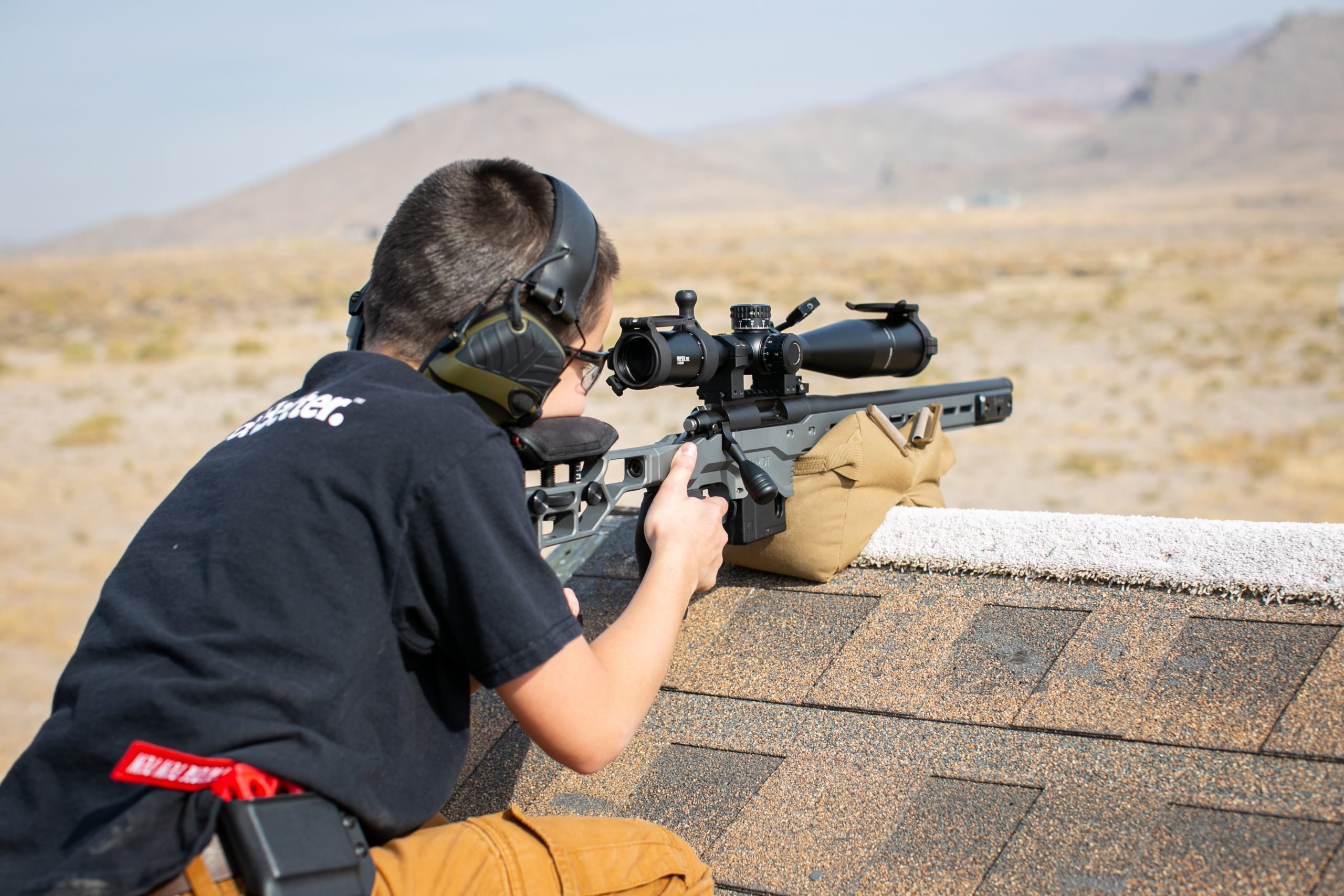 A bag is the most versatile and easy-to-use support for your gun. Ranging from small handheld shooting squeeze bags to barricade bags to large pillow bags, they can be filled with various materials, depending on the purpose of a particular design. Heavier bags help you with recoil management, while lightweight bags are easier to carry around the range or your hunting area.
Nothing can beat bags when versatility is a top priority because they have the greatest potential for improvisation. You can pick a couple of designs and use them with an array of shooter/rifle positions if you know how to do it correctly. Another advantage is that shooting sandbags and beanbags work wonderfully on uneven surfaces and with unconventional barricades.
A bag is the most versatile and easy-to-use support for your gun. Ranging from small handheld shooting squeeze bags to barricade bags to large pillow bags, they can be filled with various materials, depending on the purpose of a particular design. Heavier bags help you with recoil management, while lightweight bags are easier to carry around the range or your hunting area.
Nothing can beat bags when versatility is a top priority because they have the greatest potential for improvisation. You can pick a couple of designs and use them with an array of shooter/rifle positions if you know how to do it correctly. Another advantage is that shooting sandbags and beanbags work wonderfully on uneven surfaces and with unconventional barricades.
Foam Rest
 There’s a problem with rifle rest bags. If you take an AR-15 with a standard 30-round magazine and rest it against any shooting bag, you’ll notice that you can’t raise the muzzle high enough because the magazine bumps up against the table. You can fix this problem with a foam rest, which is basically a rectangle with cuts meant to accept the pistol’s barrel or rifle’s action and forend. Tall and solid, they provide the necessary clearance for semi-auto firearm magazines.
Foam rests are cheap and super-lightweight, and the foam itself is high-density and can take a good amount of abuse. Compared to beanbags that often feature straps for carrying around or attaching them to rifles, foam rests lack these, which makes them bulky. Besides, they don’t reduce recoil at all and are difficult to use on uneven surfaces. But, if you shoot from a table or bench, foam rests are very handy.
There’s a problem with rifle rest bags. If you take an AR-15 with a standard 30-round magazine and rest it against any shooting bag, you’ll notice that you can’t raise the muzzle high enough because the magazine bumps up against the table. You can fix this problem with a foam rest, which is basically a rectangle with cuts meant to accept the pistol’s barrel or rifle’s action and forend. Tall and solid, they provide the necessary clearance for semi-auto firearm magazines.
Foam rests are cheap and super-lightweight, and the foam itself is high-density and can take a good amount of abuse. Compared to beanbags that often feature straps for carrying around or attaching them to rifles, foam rests lack these, which makes them bulky. Besides, they don’t reduce recoil at all and are difficult to use on uneven surfaces. But, if you shoot from a table or bench, foam rests are very handy.
Monopod / Bipod / Tripod
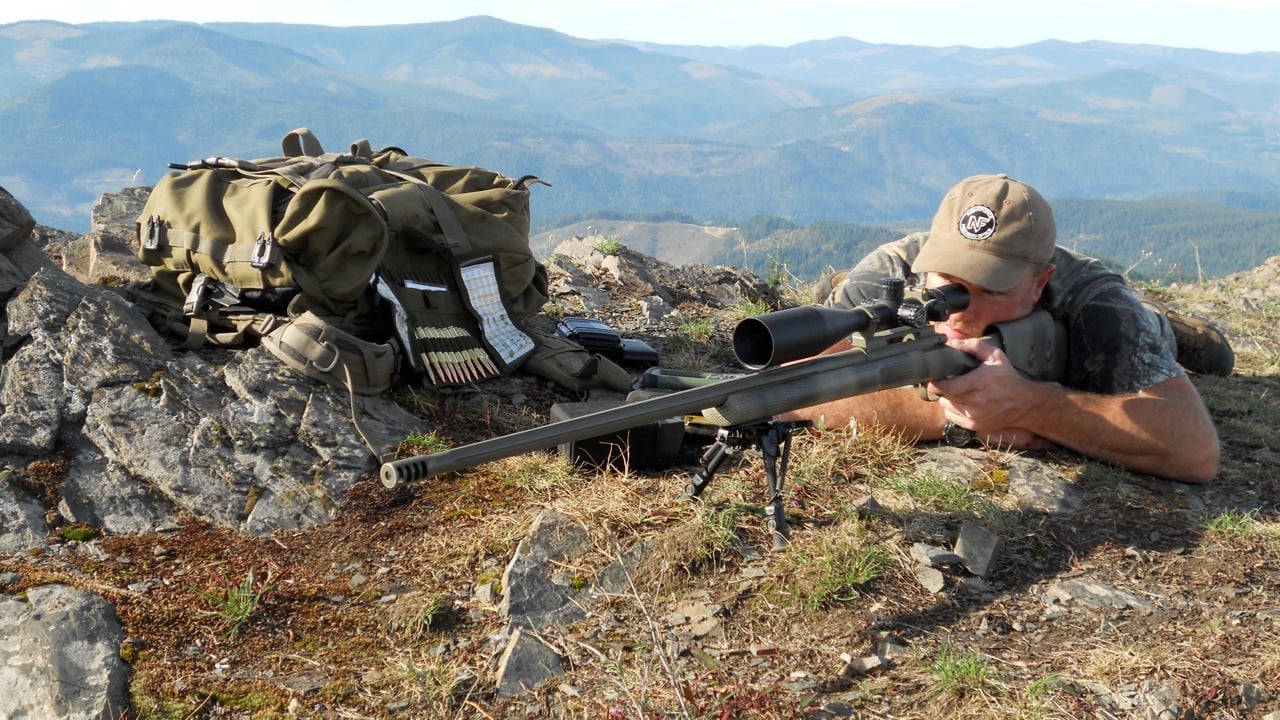 Well, these pieces of gear need no introduction. All three have pros and cons, but, generally, the more axis you can stabilize, the better. It makes the tripod the best option for precision long-range matches, where you keep the rifle stable for a long time. However, monopods and bipods are faster and easier to deploy, which makes them preferable for stalk hunting, where a hasty setting for a shot is common.
Well, these pieces of gear need no introduction. All three have pros and cons, but, generally, the more axis you can stabilize, the better. It makes the tripod the best option for precision long-range matches, where you keep the rifle stable for a long time. However, monopods and bipods are faster and easier to deploy, which makes them preferable for stalk hunting, where a hasty setting for a shot is common.
Shooting Sticks
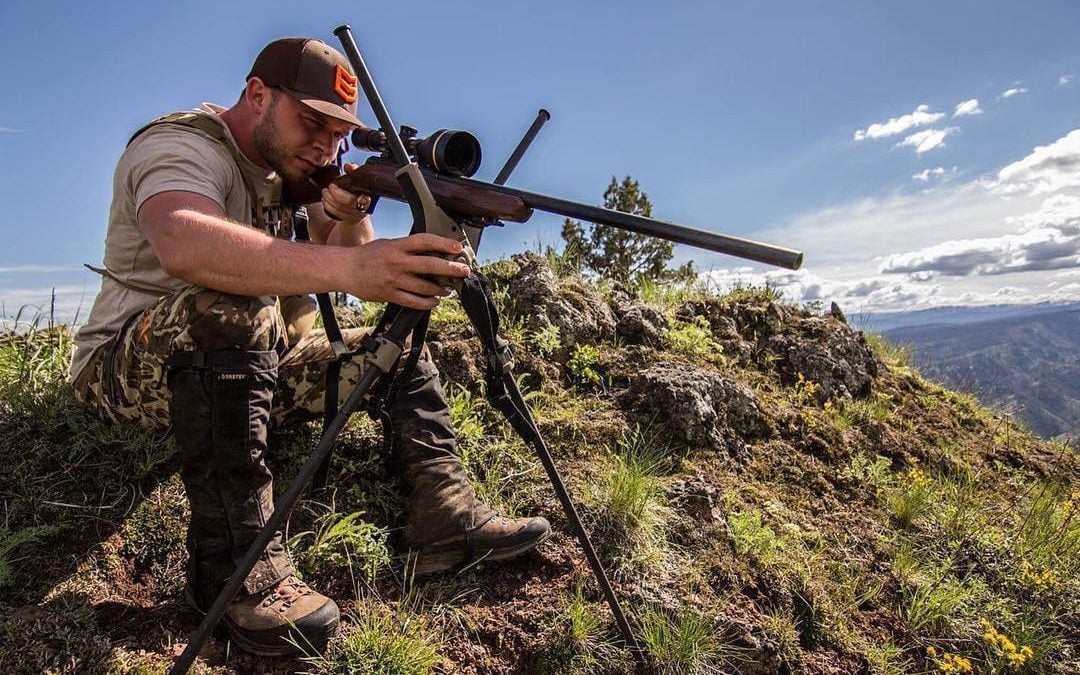 Shooting sticks are two sticks connected on one end to provide a rest for a rifle. While sticks look similar to a bipod, don’t let this mislead you. They are much more versatile because you can adjust them in seconds simply by spreading the legs to the necessary width. Bipods are more complex, and their adaptability is limited.
Shooting sticks are two sticks connected on one end to provide a rest for a rifle. While sticks look similar to a bipod, don’t let this mislead you. They are much more versatile because you can adjust them in seconds simply by spreading the legs to the necessary width. Bipods are more complex, and their adaptability is limited.
Shooting Table / Bench
 A bench or table will suit a shooter who wants to base a range in their backyard or likes to explore different undeveloped locations for practicing and solitude. They are also great deer blind shooting rests. Generally, a bench or table will suit scenarios where prolonged sitting is involved.
A bench or table will suit a shooter who wants to base a range in their backyard or likes to explore different undeveloped locations for practicing and solitude. They are also great deer blind shooting rests. Generally, a bench or table will suit scenarios where prolonged sitting is involved.
How to Use a Shooting Rest
Let’s now touch on things you need to consider to choose the right rest for your needs. They will give you insights into how to use different types of gun rests. Do you need a gun rest for hunting or range/competition? In other words, what’s your priority: fast deployment and flexibility or maximum stabilization? For spot-and-stalk hunting, a lightweight shooting rest bag and sticks are the best because they are portable and give immense versatility. A bag can be rested on trees and rocks, while sticks provide an array of angles which is beneficial when hunting in rolling terrain or mountains. A bipod is a standard accessory for varminters using stand-hunting techniques.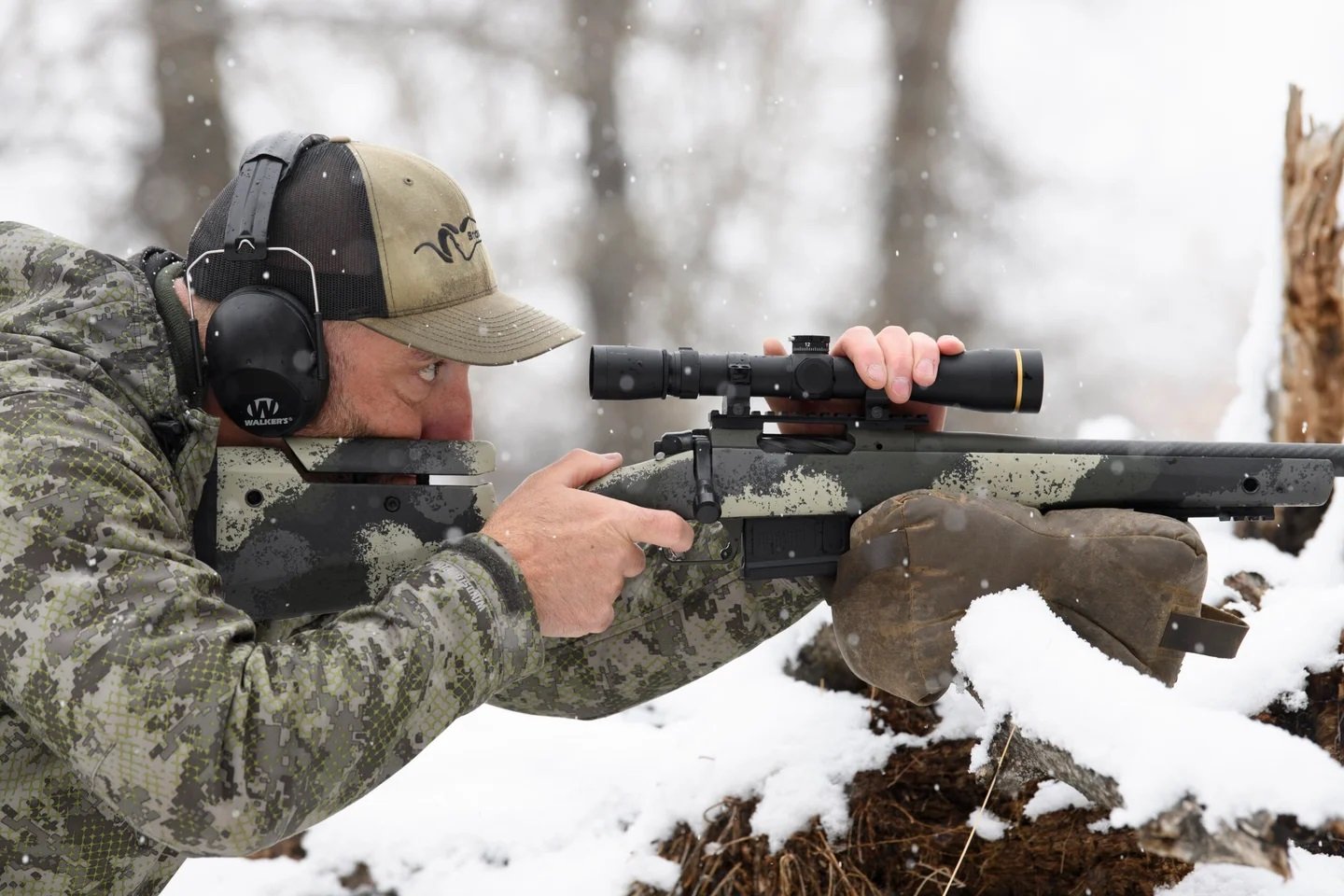 A gun rest will be the best competition shooting rest for long-range matches. Another option is a combo consisting of a bipod as a forward rest and a beanbag as a rear rest. It’s awesome for range and competition and, compared to a gun sighting stand, allows for more flexibility and less bulk.
Since operating a firearm or bow from a tree stand is a whole other story compared to shooting from the ground, tree stand shooting rests are specialized devices attachable to your tree stand station or directly to the tree. These include shooting rails and various rest systems (like one from Final Rest Shooting Systems).
A gun rest will be the best competition shooting rest for long-range matches. Another option is a combo consisting of a bipod as a forward rest and a beanbag as a rear rest. It’s awesome for range and competition and, compared to a gun sighting stand, allows for more flexibility and less bulk.
Since operating a firearm or bow from a tree stand is a whole other story compared to shooting from the ground, tree stand shooting rests are specialized devices attachable to your tree stand station or directly to the tree. These include shooting rails and various rest systems (like one from Final Rest Shooting Systems).
Pros and Cons of Gun Rests
The benefits of using a gun rest:- It provides a stable platform for an accurate and precise shot. For long-range competitions, a rifle rest is a must-have.
- It’s a great aid for hunters. Spot-and-stalk hunters can use beanbags and sticks just to be on the safe side when making an ethical shot. Varmint hunters benefit from a bipod, sticks, or portable shooting bench. Long-range hunters and ground-blind hunters often opt for a tripod gun rest.
- When an animal is in the kill range, a hunter may experience an adrenaline burst. Rifle rests compensate for shaking hands.
- An inexperienced shooter can go too far with equipment. The more stuff you’re fumbling with, the more precious time you’ll burn.
- Remember that a rifle shooting rest won’t eliminate all your sighting issues. It’s an instrument, and you should know how to use it in the most efficient way possible. Therefore you should master shooting positions and learn tricks to use in unconventional situations.
